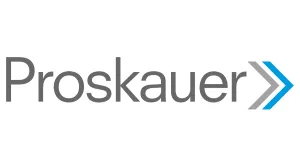- within Insolvency/Bankruptcy/Re-Structuring topic(s)
- in United States
- with readers working within the Business & Consumer Services industries
Over the past year, we have seen a significant increase in Events of Default (each, an "EoD") arising from financial underperformance. This trend is largely driven by the high interest rate and inflationary environment, with borrowers facing rising debt service costs and shrinking revenue margins. While lenders can often resolve EoDs unrelated to financial underperformance through a straightforward waiver, those triggered by ongoing or material financial underperformance present more complex challenges.
In this Deep Dive, Daniel Hendon (Partner) and Andrew Surgey (Associate) from Proskauer's Private Credit Group in London will: (i) outline the rationale for EoDs generally in secured loans; (ii) discuss the perceived "hierarchy" or "quality" of EoDs; (iii) explore options available to lenders in a consensual setting when an EoD arises from financial underperformance; and (iv) illustrate some of the structures on which we have advised. In this context, "consensual" means the lender is not seeking to enforce its security, maintains a constructive relationship with the borrower and sponsor, and all parties are committed to finding a collaborative solution. We focus on pre-enforcement options, as enforcement scenarios are highly fact-specific and beyond the scope of this discussion.
1. Importance of and rationale behind EoDs
(a) Risk management: EoDs are a fundamental component of loan agreements, serving as a critical risk management tool for lenders. These provisions specify circumstances in which lenders can demand immediate repayment, enforce security, or take other remedial actions. The primary rationale is to protect lenders from deteriorating credit conditions and ensure they can act swiftly if a borrower's financial position weakens or contractual obligations are breached. Without EoDs, lenders could face prolonged financial distress without clear rights to intervene, increasing potential losses.
(b) Contractual discipline: EoDs are important for maintaining discipline and ensuring borrowers meet their obligations under the loan agreement. They deter misconduct, mismanagement, and excessive risk taking. Clear default triggers provide an enforcement mechanism that holds borrowers accountable for financial and operational performance.
(c) Seat at the table: EoDs also serve a pragmatic role in negotiations between parties. When an EoD occurs, prudent borrowers and sponsors typically engage with lenders to seek a waiver. Otherwise, lenders may exercise their rights to take control or sell the business. This opportunity to negotiate gives lenders a seat at the table, allowing them to understand the reasons behind the EoD and assess the group's financial prospects. It often leads to a fact-finding process, enabling lenders to make informed decisions about waivers.
(d) Negotiation tool: An EoD shifts the balance of power toward lenders, as borrowers and sponsors are motivated to avoid acceleration, enforcement, or insolvency. EoDs thus serve as a strategic tool for lenders to negotiate improved terms, enhanced security, or loan restructurings that better reflect the borrower's financial condition.
(e) Early warning system: Carefully drafted EoD triggers act as both enforcement mechanisms and early warning signals, enabling lenders to proactively manage risks before they escalate into severe distress or insolvency.
(f) Enforcement mechanism: If no viable alternative exists, lenders can exercise powerful enforcement rights, including loan acceleration, immediate repayment demands, and security enforcement. As noted, enforcement options are extensive and fact-specific on each deal, and are therefore not covered in detail here.
2. Hierarchy or quality of EoD
(a) Is there a hierarchy of EoDs, and are some considered to be of "better quality" than others? While certain EoDs—such as non-payment, covenant breaches, cross-default or insolvency—are generally viewed as more serious than, for example, a technical misrepresentation, each EoD is a contractually agreed and actionable event.
(b) This question around the "quality" of EoDs arises fairly frequently, so it is worth emphasising that lenders are entitled to take action under the finance documents following the occurrence of any EoD. That said, there is a reputational consideration for lenders, who may be reluctant to enforce remedies following a relatively minor or technical default, such as a misrepresentation, even though they are contractually permitted to do so.
3. Options following an EoD in a consensual setting -As a first step, lenders should send a reservation of rights letter to the borrower (or parent) specifying the EoD. This allows lenders to gather information, seek legal advice, and open a dialogue with management and stakeholders, whilst protecting against any argument that their rights or remedies have been waived by conduct. Beyond this, lenders can consider the following options in exchange for granting a waiver of the relevant EoD(s):
(a) Sponsor support: A requirement for additional sponsor financial support, which may take the form of (i) a direct liquidity injection, (ii) an equity commitment letter and/or (iii) a sponsor guarantee to support the group's obligations. For further insight into the latter two options, please see Private Credit Deep Dives – Sponsor "Guarantees" (Europe) - Insights - Proskauer Rose LLP.
(b) Enhanced financial covenants: Introduction of additional or tighter financial covenants to provide earlier warning signs of financial underperformance and to improve lender visibility and control. Key among these is the introduction of a liquidity covenant. If a liquidity covenant is to be introduced, consider ensuring that liquidity is tested on an average basis (for example, on the last Friday of each week for a month end test) rather than on a month-end spot basis; an average test provides a more accurate picture of the liquidity position.
(c) Enhanced information rights: Broader and more frequent reporting obligations, potentially including (i) additional KPIs, (ii) notifications of material contract wins or losses, (iii) updates on other material developments relevant to the business, and (iv) weekly/monthly/quarterly calls with the borrower and the sponsor.
(d) 13-week cashflow forecasts: Regular delivery of detailed, rolling 13-week cashflow forecasts provide lenders with a granular, forward-looking view of the group's liquidity position and the projected runway to a potential restructuring or refinancing.
(e) Improved economic terms: Lenders may seek better pricing through one or more of the following: (i) an increase in the applicable margin; (ii) a margin ratchet linked to financial performance; (iii) the issuance of additional warrants; (iv) co-investment rights in the borrower group or related entities; and/or (v) consent or waiver fees, which can be paid in cash up front or capitalised to existing facilities. Consent fees are not commonly charged and, where they are, typically do not exceed 1 per cent. of total term facility commitments.
(f) Reduction of leakage: Narrowing carve-outs to negative covenants (for example, restrictions on distributions, disposals or acquisitions), closing documentary loopholes, and/or reducing basket sizes to limit discretionary spending or asset transfers.
(g) Increased guarantor coverage: Expanding the guarantor group to improve credit support, typically by increasing the percentage of consolidated EBITDA or assets covered by guarantees. This remedy is less common in the market.
(h) Rectification of documentation gaps: Correction of any deficiencies in the existing finance or security documents that could impair the lenders' enforcement rights or recovery prospects.
(i) Board observer rights: The right to appoint a non-voting observer to the board of directors of one or more group companies, enhancing lender oversight of strategic and financial decision.
(j) Independent business review ("IBR"): The right to require the appointment of an independent financial adviser to conduct a comprehensive review of the group's business, financial position and prospects. This may be coupled with a requirement for the borrower to deliver a turnaround plan addressing any underperformance identified in the IBR.
(k) Chief restructuring officer ("CRO") appointment: The option to appoint a CRO to the board of one or more group companies, either immediately or upon the occurrence of specified trigger events that indicate further financial distress.
(l) Chief financial officer ("CFO") replacement: The option to appoint a new CFO of the group—and to be actively involved in the selection process—either immediately or upon the occurrence of specified trigger events indicating further financial distress.
4. Structures we have seen -The options outlined above are often combined and tailored to the specific circumstances of the borrower, and each package of documentary updates or requests is fact-specific. By way of illustration, recent transactions on the more novel or bespoke end of the spectrum that we have advised on included:
(a) A strong sponsor providing a guarantee of all debt (including interest and fees), callable upon written demand following any EoD, in exchange for the permanent suspension of covenant testing.
(b) A private credit fund capitalising all outstanding and unpaid interest (which was substantial), and implementing an eight-month PIK toggle that capitalised all interest (both margin and base rate) during that period, with cash pay interest resuming thereafter.
(c) A sponsor delivering an equity commitment letter for a capped amount, payable upon written demand following the occurrence of a limited set of EoDs (non-payment, covenant breach, and certain information deliverables), in exchange for specified waivers.
(d) In a debt and equity co-investment structure, a private credit fund increasing its stake in the business and obtaining a call option (exercisable upon certain prescribed events) in exchange for specific waivers.
(e) A private credit fund requiring the sponsor to facilitate a refinancing process or a sale by a long stop date—with interim milestones, each constituting a separate EoD if not met—in exchange for certain waivers.
(f) A private credit fund agreeing to permanently suspend the payment of interest in exchange for the sponsor providing additional liquidity as a senior secured lender under the same facilities agreement.
(g) A private credit fund entering into a one-week standstill agreement to allow the borrower and sponsor time to deliver a few key items. If the items were not delivered within that period, enforcement would follow. This was an unusual fact pattern, as standstill agreements are typically reserved for enforcement scenarios.
5. Conclusion - The current macroeconomic environment is driving a notable increase in EoDs due to borrower financial underperformance. While lenders have extensive enforcement rights, many stakeholders prefer consensual solutions that preserve value and avoid the disruption that formal enforcement can cause to a business. By leveraging the negotiating power that comes with an EoD, lenders can secure additional protections such as enhanced covenants, information rights, or new capital that realign risk and improve visibility over performance. A thoughtful, tailored approach that balances operational needs with risk mitigation is essential for a successful outcome for all parties. If all goes well, the lender may ultimately realise greater long-term value than originally anticipated at the time of initial documentation.
The content of this article is intended to provide a general guide to the subject matter. Specialist advice should be sought about your specific circumstances.



